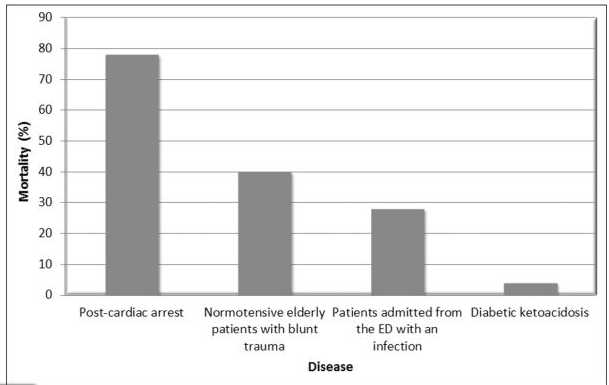Where does lactate come from and how to approach elevated lactate levels: a  https://abs.twimg.com/emoji/v2/... draggable="false" alt="🧵" title="Thread" aria-label="Emoji: Thread">
https://abs.twimg.com/emoji/v2/... draggable="false" alt="🧵" title="Thread" aria-label="Emoji: Thread">
@accpchest #CHESTCritCare
@accpchest #CHESTCritCare
First time lactate was suggested as a clinical prognostic tool was in 1964, when a lactate higher than 4mmol/L was associated with poor outcomes in pts w/ undifferentiated shock https://science.sciencemag.org/content/143/3613/1457">https://science.sciencemag.org/content/1...
Remember the Krebs cycle https://abs.twimg.com/emoji/v2/... draggable="false" alt="😜" title="Zwinkerndes Gesicht mit Zunge" aria-label="Emoji: Zwinkerndes Gesicht mit Zunge">: lactate is produced by most tissues, w/ highest levels produced by muscle. Normally, it is rapidly cleared by the
https://abs.twimg.com/emoji/v2/... draggable="false" alt="😜" title="Zwinkerndes Gesicht mit Zunge" aria-label="Emoji: Zwinkerndes Gesicht mit Zunge">: lactate is produced by most tissues, w/ highest levels produced by muscle. Normally, it is rapidly cleared by the
liver, with a small amount of additional clearance
by the kidneys.
liver, with a small amount of additional clearance
by the kidneys.
In aerobic conditions, pyruvate is produced via glycolysis and then
enters the Krebs cycle, largely bypassing the
production of lactate.
enters the Krebs cycle, largely bypassing the
production of lactate.
Don& #39;t forget: it is not only septic shock that elevates lactate:
https://www.ncbi.nlm.nih.gov/pmc/articles/PMC3975915/">https://www.ncbi.nlm.nih.gov/pmc/artic...
Easy way to remember: hypoperfusion versus not. Hypoperfusion driven cases usually include all types of shock, post cardiac arrest and regional organ ischemia.
Cases not driven by hypoperfusion include
drugs, seizures, malignancy, thiamine deficiency. Lactate levels stem from dysfunction of cellular metabolism or overproduction from increases in metabolism. The treatment should target the cause/reversing the offending agents
drugs, seizures, malignancy, thiamine deficiency. Lactate levels stem from dysfunction of cellular metabolism or overproduction from increases in metabolism. The treatment should target the cause/reversing the offending agents
Elevated lactate in the undifferentiated patient is associated to mortality, but the association varies according to the underlying disease. #CHESTCritCare @accpchest
With the same cutoff value, in-hospital mortality approaches zero in uncomplicated DKA but reaches more than 75% in the postecardiac arrest population.
This highlights the importance of using lactate levels in the appropriate clinical context. @accpchest https://pubmed.ncbi.nlm.nih.gov/20669785/ ">https://pubmed.ncbi.nlm.nih.gov/20669785/...
This highlights the importance of using lactate levels in the appropriate clinical context. @accpchest https://pubmed.ncbi.nlm.nih.gov/20669785/ ">https://pubmed.ncbi.nlm.nih.gov/20669785/...
Bottom line: lactate is a useful tool, but as any tool, must be applied in the right patient taking into consideration the right clinical context. Fin/ @accpchest #CHESTCritCare

 Read on Twitter
Read on Twitter



